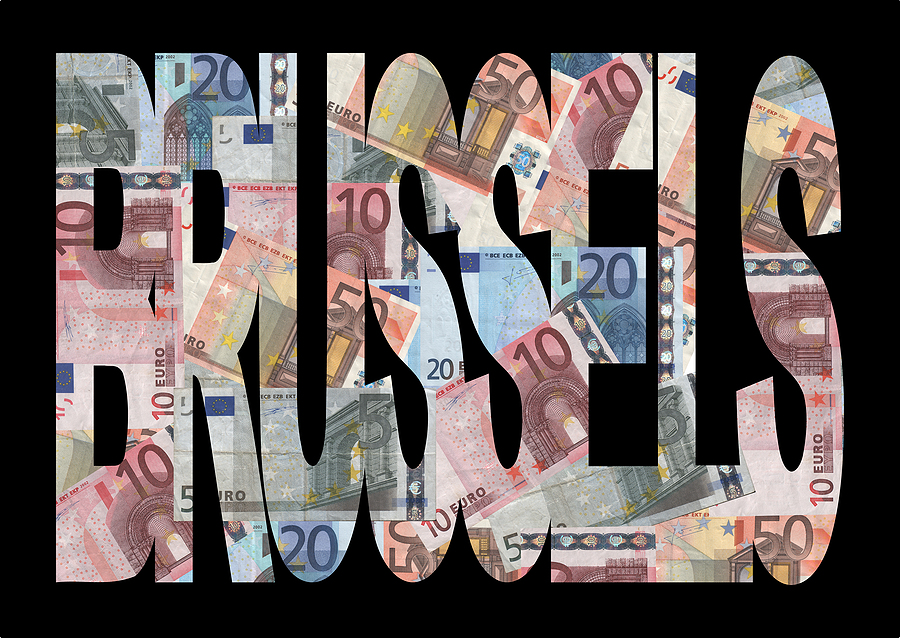
February 07, 2024

Source: Bigstock
During the 2004–07 waves of expansion, the European Union (EU) welcomed ten countries of the former Soviet bloc along with Cyprus and Malta. “Old Europe” sought to rebuild the post-communist countries using the carrot of financial assistance and the stick of political servitude. The latter fostered resentment amongst the nationalist and socially conservative new EU members. Then, the Russian invasion of Ukraine in February 2022 took a hammer to the continent’s precarious politico-economic cohesion, establishing East-Central Europe as an important theater of a new Cold War.
First, the EU responded to the Ukraine War by imposing severe economic sanctions on Russia, which skyrocketed energy prices, caused inflation, and destabilized financial markets. These punitive measures disproportionately hurt EU members such as Hungary, Slovakia, and Bulgaria that predominantly depend on cheap Russian oil and gas. Second, Western powers revived the EU’s moribund expansion policy and granted candidate status to Ukraine and politically linked Moldova in June 2022. In doing so, they sidestepped the Balkan countries that were promised EU membership a decade ago.
Third, Brussels committed EUR 50 billion from its budget to Ukraine, while denying Poland and Hungary access to EUR 36 billion and EUR 22 billion respectively for allegedly violating rule-of-law standards and “democratic backsliding.” Critics of the EU perceive its withholding of funds as retribution against these Central European countries for promoting their national interests, social conservatism, and a postliberal Christian democratic model of governance. Prior to the dispute, Poland was the largest recipient of EU funds, while Hungary was the third-largest.
These conflicting East-West political identities came to a head at the European Council (EC) summit in December 2023, in which EU leaders voted on opening membership talks with Ukraine and giving it EUR 50 billion in aid. Hungarian Prime Minister Viktor Orbán refused to participate in the former decision and vetoed the latter. The financial package required unanimous approval from all 27 EU leaders to pass. Hungary’s veto, albeit legal, flouted the unwritten rule that EU members must bow to the Brussels-Berlin-Paris axis of power.
Ahead of the Feb. 1 EC emergency meeting, where the EU heads of state would revisit the EUR 50 billion question, officials devised a plan to coerce Orbán into complying. According to a Jan. 28 Financial Times exposé, Brussels intended to “explicitly target Hungary’s economic weaknesses, imperil its currency and drive a collapse in investor confidence” if Orbán refused to lift his veto. British legal academic Andrew Tettenborn argued that this “leak” to a pro-Brussels newspaper was likely planted to bully Hungary into submission. At the EC meeting on Thursday, Orbán surprisingly rescinded his veto against the aid package for Kyiv.
Did Orbán succeed in leveraging his veto to unlock the frozen EU monies that his country needs? No. Orbán also cited the Ukraine government’s discrimination against ethnic Hungarians, living within its borders, as a key reason for blocking funds to the war-torn country. Did Ukraine restore to its minorities the right to education in their own languages? No. On Monday, Hungarian Foreign Minister Péter Szijjártó said, “We don’t see at all that the issue of national minorities has reached resolution…. We still have a long way to go.” What, then, turned Hungary’s December 2023 “nay”—a master class in performative politics and a humiliating rebuke to the West—into a “yea” vote less than two months later? Brute-force politics. By threatening to devastate the Hungarian economy, Brussels reminded Budapest that it could not keep biting the hand that feeds it. It also proved that some EU members are more equal than others.
In 2004, the Danish film company Zentropa produced an anthology called Visions of Europe, comprising 25 short films (one from each member country), to commemorate the EU’s single largest expansion. Each director created a five-minute short depicting a “personal vision of current or future life” in the EU. “Prologue,” by the Hungarian filmmaker Béla Tarr, opens with a single, fluid tracking shot of a queue rendered in high-contrast black and white. As the camera slowly moves leftward, it captures the impassive faces of men and women standing in an unending line that echoes the repetitive, plaintive étude by Mihály Vig. Looking haggard and famished, they wait in front of the brick facade of an otherwise nondescript building. When the camera finally reaches the front of the line (three long minutes into the film), it reveals that the people are waiting for a young woman to open the window of a soup kitchen. She greets each person with a smile, hands out a plastic bag with two bread rolls and a cup with a drink, and then records the charitable act in her notebook. The soup kitchen serves as a metaphor for the paternalistic West, which expects the rest of Europe to fall in line.
Though shot in Budapest, the film has no identifying features that locate it in Hungary. Víg’s haunting background score is titled “Lengyelország,” meaning Poland in the Hungarian language, which also implies that all of East-Central Europe is doomed to the same fate. In Tarr’s words, the short is about “humiliated, offended people.” Whereas the other films in the 2004 anthology celebrated the achievement of an “ever-closer union,” the Hungarian contribution prophesied perpetual subjugation for the new members of the European Union. Hungary’s foresight was 20/20.
Meg Hansen is the Budapest Fellowship Program’s Visiting Senior Research Fellow at the Danube Institute in Hungary. Previously, she served as president of a State Policy Network affiliated think tank in Vermont.